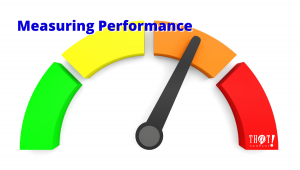
Websites at one time served as simple sources of information about a company, basically, an online brochure that wasn’t all that technically complex.
Today, websites are the backbone of any company’s online presence and an integral part of the company as a whole. They tie into other business and marketing tools and also serve a variety of functions including client portals, inventory management systems, accounting systems, eCommerce platforms, etc.
Company websites range from very simple to extremely complex, and they should be an integral part of a business’s sales and marketing strategy. There are many metrics and factors to assess and consider when calculating and measuring a website’s return on investment (ROI) but, if I had to sum it up in one word, it would be conversion! Whether that means getting a lead or selling a product, it is what you need to take the next step. Your website must be set up to successfully convert interest and intent into clients and/or purchases.
Do It Yourself Platforms Are Better Than Ever
 The approach to building websites has certainly evolved over the years. Compare to early sites and the new sites built today. The visual appeal; thoughtful, data-informed user experiences, and complex e-commerce sites are just some aspects that have grown by leaps and bounds.
The approach to building websites has certainly evolved over the years. Compare to early sites and the new sites built today. The visual appeal; thoughtful, data-informed user experiences, and complex e-commerce sites are just some aspects that have grown by leaps and bounds.
In addition, the time and cost needed to create a website have been significantly reduced. Platforms now also offer built-in tools to help optimize search engine results and performance measurement, and so plugins and modules that it will make your head spin. DIY web platforms offer a great balance of ease of use, flexibility, and cost. They provide those with little-to-no web development experience the ability to quickly create a professional-looking website, for a low cost.
With these affordable options available, why would you choose to pay thousands of dollars for a website?
Well, you’re not building a website, you’re building a sales tool!
There is a difference between developing a website and creating a conversion-focused sales and marketing tool that will work for you and help you achieve your business goals.
You need to invest time and effort to obtain a high-quality website that produces results. In other words, it’s worth digging deeper to understand what returns you can and should expect for any level of investment.
Here are some things to consider when deciding whether to build a DIY website or get expert help. Because great websites should offer valuable, customer-focused content, and provide a good user experience.
One of the biggest challenges to setting up a website is developing content that speaks to the needs of customers and aligns with the value of your products, services, and brand. To get this right, you need to ask the right questions that go beyond the technical and design considerations of building a website.
Questions to Ask When Creating Content for a Website
Who are your customers?
- Can you accurately describe who your key customers are?
- Can you clearly and confidently describe the unique benefits your customers can expect from your products and services?
- Can you identify and describe the pain points they have, that your solution has to offer them?
What about content creation?
- Describe what the difference is between good and great content for you and your brand?
- What is the cost (either budget or time) of great content creation (images and writing, even video)?
- Do you know if the content will resonate with your customer needs?
- How will you distribute the content?
Conversion-focused content needs to be customer and value-focused. You’ll need to find the right “fit” by mapping out your content to:
- Identify your priority segments
- Ensure messaging is aligned to your core brand offering
- Provide customer proof of your solution’s success
 In short, you can ensure your site’s content is conversion-oriented by exploring exactly why and how customers choose your products and services. Only then will you be able to develop content that differentiates you from your competitors.
In short, you can ensure your site’s content is conversion-oriented by exploring exactly why and how customers choose your products and services. Only then will you be able to develop content that differentiates you from your competitors.
Think about your customers’ needs and create content that fits their needs. This will create trust and proof that your company’s offering (and core values) is what they are looking for.
Identifying what sets you apart from your competition takes time and effort, which is a cost you’ll need to incur no matter what path you take. But conducted in the right way, it is now an investment to increase your conversion potential and boost your ROI. Make the website work for you, not just a centerpiece to look at.
4 Stages of the Online Customer Journey
Identifying customer and value-focused content is the first step to building a conversion-focused website.
There are four key stages a website user moves through. These need to be considered when mapping how people use a website.
- Awareness
- Evaluation
- Conversion
- Retention
There are different types of requirements for each stage. Depending on how someone enters your site, you’ll need to consider what content is most applicable at what stage and anticipate how to offer the right content in the right place to move them through the process.
This is similar to an in-store experience, where a sales representative will identify the intentions or needs of customers, and then guide them through the store while explaining your products and company. This is moving them from initial awareness to evaluation and if done well purchase.
The goal is to create a valuable and intuitive experience that leads to conversion. Having a great user experience will also help to increase retention.
[bctt tweet=”Think about your customers’ needs and create content that fits their needs. This will create trust and proof that your company’s offering is what they are looking for.” username=”ThatCompanycom”]DIY or Custom Website?
Most of the top DIY web platforms offer template design themes that are mobile responsive. You can then plug in your images and text, adjust a few settings, and press the button to launch.
However, that’s where their support for website planning stops. If you can find a theme that directly fits your navigation needs, then great and a DIY platform may be right for you. Carry on.
That said, if you’ve mapped out your customer profiles, content needs, and user journey, you’ll likely discover that an optimal user experience can’t be found in these pre-set themes. You will need to modify them meaning you’ll soon need a developer who knows what they are doing.
You may be somewhat technically inclined, and if the modifications are minor, you may be able to do them yourself. However, you’ll need to understand that as you add on and modify features, there is a good chance you’ll eventually need professional help. When that time comes, they will spend time (i.e. cost to you) to deconstruct what you’ve built, in order to put it back together and add to it. Bottom line, any modification to a standard structure or theme means you are now in the custom-build territory and you will need a web professional to step in. Once that happens, it may or may not be a simple update.
Up to now I have only been talking about the look, feel, and content of the site, and not about any customized integration you may need. This includes the thousands of plug-ins and custom solutions you can use to add functionality or may need to integrate your website with other systems. All of this needs to be thought out to ensure it fits technically and logically before actual site-building. The importance of prior planning can not be understated.
How Will you Measure Performance?
 Understanding who uses your site, where they come from, and what content they enjoy is crucial to building your online presence. Without this information, you have no way of knowing if what you are creating is helping you achieve your goals.
Understanding who uses your site, where they come from, and what content they enjoy is crucial to building your online presence. Without this information, you have no way of knowing if what you are creating is helping you achieve your goals.
Many DIY web platforms can easily integrate Google Analytics, or even have their own measurement systems in place (e.g. Shopify). Google Analytics integration is not difficult to integrate with a website. However, it is yet another step outside the website set-up process that DIY web platforms don’t provide as part of their turnkey offer hence, extra costs.
So basically that couple hundred dollar website most likely will not suit your needs. As sooner rather than later, you will have to scrap it and start all over again.
So when contemplating a new website for your business, be it to support a marketing campaign, launch a new product or develop awareness for your products or services don’t just think about the cost. Because it’s just as important (even more so) to think about what you will say and the unique experience you are trying to create.
This way of thinking will ensure you can maximize your ROI—meaning you’ll be converting potential customers into leads or sales, not just building a website for the cheapest possible price just to “have a website”.

























